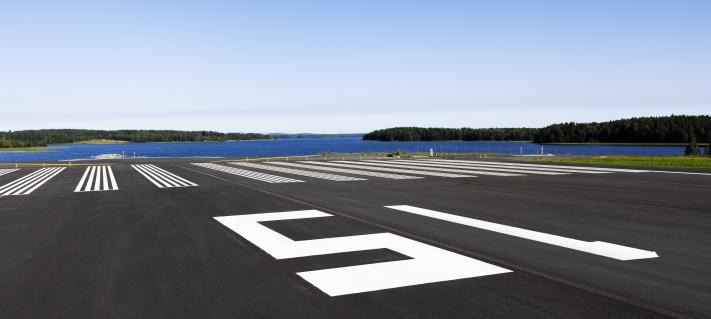Good environmental work is part of Finavia's corporate responsibility. Our Sum of Good Things series highlights details of Finavia's responsibility work. This story is about reusing textile waste at Helsinki Airport.
The smoking area at Helsinki Airport’s non-Schengen area now features new furniture. All three tables as well as six benches are made from composite materials, manufactured using a combination of textile and plastic waste.
“Usually clothes that are worn out end up being burned as energy waste. Our goal was to find a more environmentally friendly solution. Now Finavia employees’ used clothes and uniforms are given new life as tables and benches,” shares Annaleena Kiikonen, Sourcing Manager at Finavia.
One table is created using 175 kilos and one bench 20 kilos of textile waste. All in all, these furniture pieces utilise waste that is equivalent to a staggering 4 600 worn out t-shirts.
Textile reuse becoming more common in Finland
TouchPoint, a company that specialises in manufacturing ecological work clothes, is behind the new furniture in the smoking area. As the tables and benches are constructed out of composite, a highly durable material, their factory warranty is 50 years.
“The reuse of textiles is slowly becoming more and more common is Finland,” says Mervi Haapiainen, Senior Key Account Manager at TouchPoint. “Finland alone produces over 70 million kilos of textile waste a year. That’s an enormous amount and every deed that reduces that is valuable.”
Finavia and TouchPoint have also launched a new line of work clothes that uses polyester which is created using plastic bottles. This means that the manufacturing of work uniforms is already a form of recycling.
Reusing materials in the airport
Finavia’s airports will keep aiming for solutions that stem from circularity or the circular economy. Kiikonen highlights the importance of thinking of new ways to reuse old materials.
“A good example of material reuse involves the beautiful art fabric designed by Stefan Lindfors, which once covered the ceiling of the transfer lounge. The fabric was removed when airport expansion work began. This fabric did not go to waste, however, since it was cut and made into canopies in the gate area. The rest were transformed into canvas bags,” says Kiikonen.
Finavia is known for its efforts towards more sustainable air travel. Recently, Finavia achieved carbon neutrality at all its airports after having worked towards this goal for a long time.
Finavia recognised for its responsibility efforts at the Finnish Travel Gala





